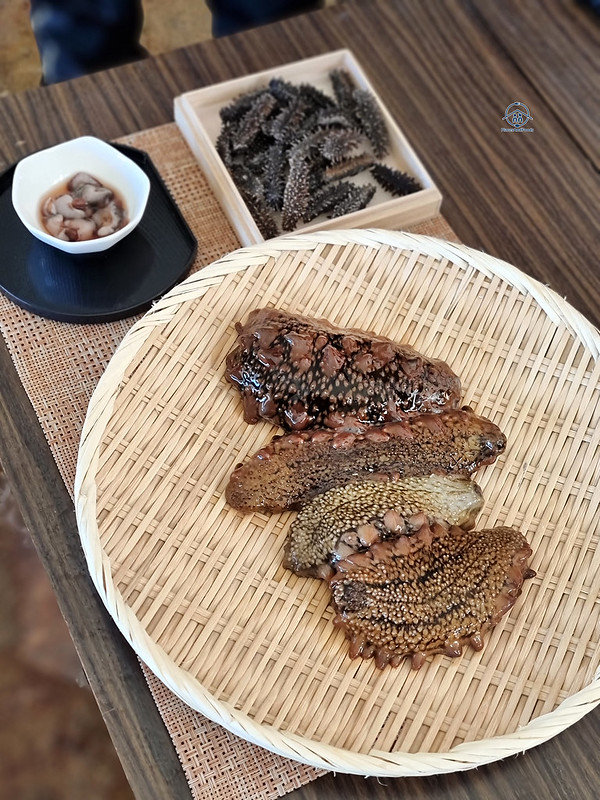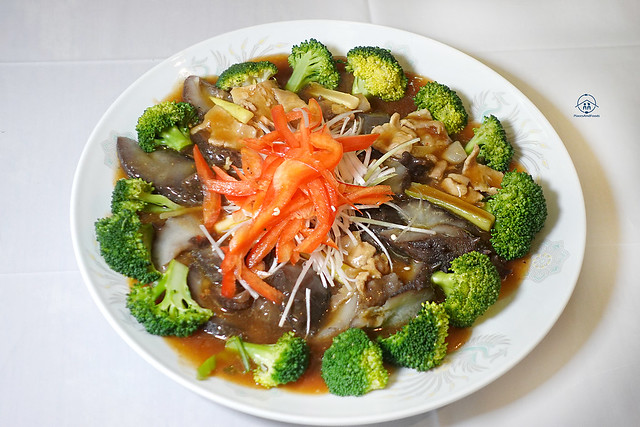The Curious Case of the Japanese Sea Cucumber
3 min read
The Curious Case of the Japanese Sea Cucumber
The Japanese sea cucumber, also known as the namako, might not be the most aesthetically pleasing creature. Resembling a spiky, leathery sausage, it scoots along the seabed, filtering detritus and playing a vital role in marine ecosystems. Trust me, the first time I look at the Japanese sea cucumber, it looks like a mini sea monster from Ultraman or Godzilla movies. But don’t underestimate this unassuming echinoderm! In Japan and other parts of Asia especially the Chinese community, the namako is considered a culinary treasure, boasting a unique flavor and potential health benefits.
A Prickly Resident of the Deep
The Japanese sea cucumber (Apostichopus japonicus) comes in three main colors: red, green, and black. I have seen the red and black in Aomori and Hokkaido. It inhabits shallow coastal waters around the Pacific Rim, from Alaska to the Philippines. Though slow-moving and seemingly defenseless, it has a few tricks up its sleeve. When threatened, it can expel sticky threads called cuvierian tubules to deter predators. It can even regenerate lost limbs!
From Sea to Plate: A Delicacy with a Twist
Despite its unusual appearance, the namako is a prized ingredient in Asian cuisine. Its flesh is surprisingly firm and has a subtle, briny flavor. It’s often served cooked, simmered in broths or stir-fries, or enjoyed raw as sashimi. But perhaps the most intriguing way to experience namako is in sunoko, a traditional Japanese dish where the sea cucumber is fermented in vinegar and sake. The fermentation process tenderizes the flesh and imparts a complex, sour flavor that’s both refreshing and slightly funky.
I tasted it raw and the texture is tough while the taste and flavour comes with hints of saltiness. Most Chinese will soak the sea cucumber and cook it with stew so it will be soft in texture and cooked it with vegetables like broccoli with sauce. You can also find sea cucumber in Chinese broth depending on the style of cooking.
Beyond the Plate: Potential Health Benefits
The namako’s popularity extends beyond its culinary appeal. Traditional Chinese medicine has revered it for centuries as a tonic, believing it to possess various health benefits. Modern research suggests it might have anti-inflammatory, antioxidant, and even anti-cancer properties, although more studies are needed.
The Next Time You See a Sea Cucumber
So, the next time you encounter a sea cucumber on the beach, remember that it’s more than just a spiky oddity. The Japanese sea cucumber is a fascinating creature with a rich cultural and culinary significance. And who knows, maybe you’ll even be tempted to try it yourself one day! This is
The Curious Case of the Japanese Sea Cucumber!
This trip is sponsored by Ministry of Agriculture, Forestry and Fisheries. Thank you everyone who makes this trip possible and also nice meeting all the influencers and media representatives from South East Asia, you all makes this trip amazing!
For advertisements, please contact us at [email protected]










